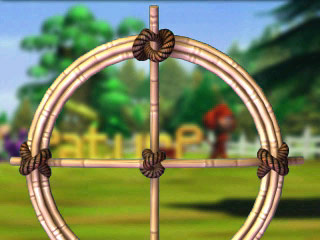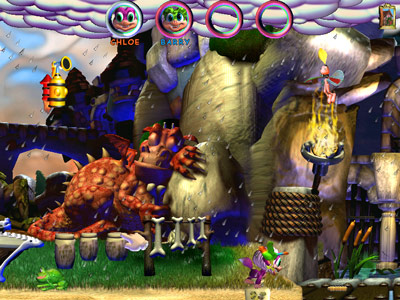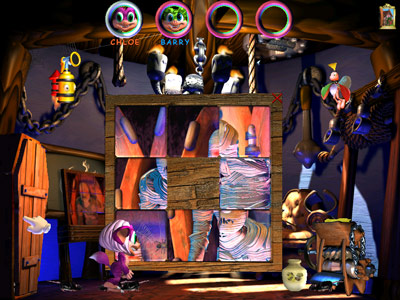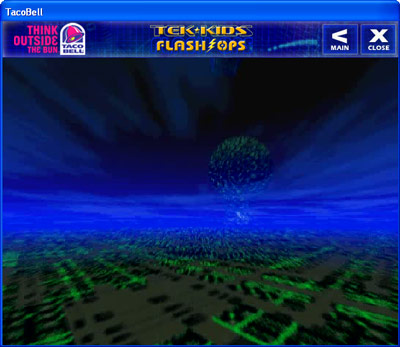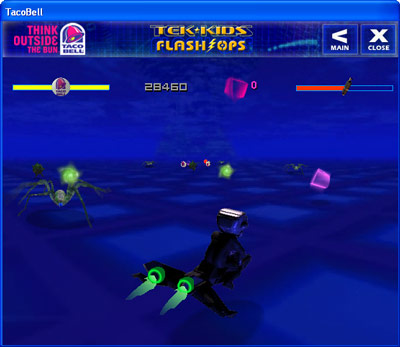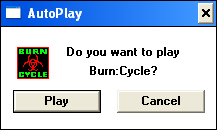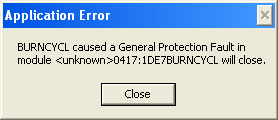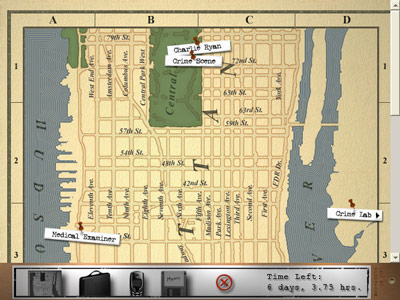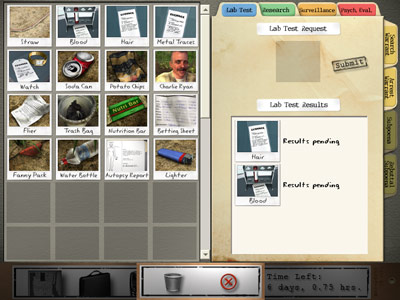Artrageous! is a game that has held my curiosity since I first inventoried it from an eBay lot of 50 cheap CD-ROMs. The first order of business is to determine whether or not the disc actually qualifies as a game and can be entered into MobyGames. Flipping through the manual that accompanied the game reveals that there are a few little activities that specifically contain ‘game’ in the title. This fact unequivocally entitles the disc a spot in the MobyGames database. Let’s go.
The game launches into a little pre-rendered virtual reality plaza where your guide, Pim, explains all about Artrageous!. He makes the case that the CD-ROM offers incredible value over a physical museum visit because you are encouraged to touch and play with the art. There is a database hall with a huge cross-referenced database of artists and their works (as well as the museums that presently hold the works; BTW, the credits for this title are looooooong). For learning activities, there are areas branching from the plaza that discuss color, light, perspective, composition, and the life of art.
Color! I know color from all of my years of working with computer multimedia technology, or I thought I did. I strike out in search of some game that will make this title worthy of entry into the great gaming database.
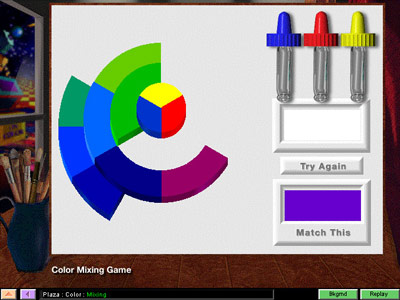
Here is a color mixing game where you have to mix various levels of primary colors to produce the specified color. What colorspace? Blue-red-yellow, apparently, which I am unfamiliar with. So many colorspaces. I know RGB and YUV best, with a little CMYK. The game explains that this is the famous hue/saturation a.k.a. HSV/HSB colorspace that I have heard of, so I feel a little more grounded. To that end, the game is quite interesting in its challenge of building an HSV color wheel, piece by piece.
There’s another color-related game about color and music. You are shown Composition VII by Kardinsky which is supposed to represent a cacophony of sounds via its use of color. You can click on any part of the painting to hear what sounds stand in for colors. Deep blue represents a hit from Bach’s Tocatta. White is a heavenly sound. Black has nothingness associated with it. Yellow stands for birds chirping. There is no real goal so this falls more into the category of interactive learning activity vs. game.
Another color-related activity shows a world map with color pointers set up at various locations. Clicking on one reveals what special meanings that different cultures have traditionally attached to different colors (e.g., Washington D.C., USA values green, China mourns in white).
The Mona Lisa seems to figure prominently in the lighting category of activities. The narrator starts by explaining that it “has been used to bludgeon generations of art students.” Hey, the rest of us ordinary, non-art-appreciating mortals haven’t exactly been spared the beating either. Another art minigame, Creating Light, shows a canvas with a mish-mash of shapes (including the Mona Lisa). Your task is to click on one of the icons on the left sidebar which brings up the outline of some shape on the canvas. Drag the outline and place it on its appropriate shape. Alternatively, gaze at the image and figure out how many objects are hidden inside.
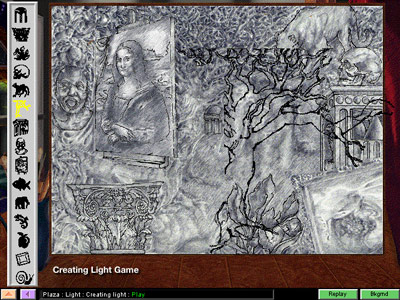
If you complete the game, you can go another round with the same objects on a different canvas.
The perspective section contained an interesting minigame. A bunch of objects floated around a room drawn with a 3D vanishing perspective. You have a certain time limit under which you must drag each object into more appropriate places in the room based on their relative perspectives. The game also allowed you to display a vanishing perspective grid to help you along if necessary.
There was an odd game about the golden proportion. I think it belonged to the composition section. This was the first time I had heard of the Greek notion that the perfect artistic ratio is 1:1.6. There was a minigame that has you identifiying as many golden proportioned pieces of a picture as you could within a certain time limit.
Finally, in the life of art section, there is a game which is essentially a basic jigsaw puzzle, only with all square pieces:
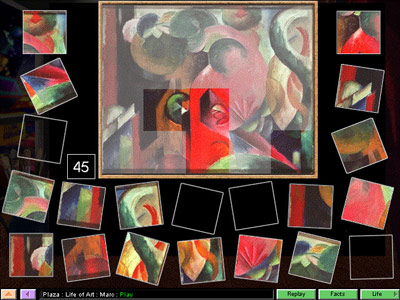
There are 3 difficulty levels which configure how many seconds you get to put all the pieces in the right places — easiest is 70 seconds, hardest is 30.
There was a lot of information and activities on offer in Artrageous!. I’m glad I chose to tackle this title on a Saturday as I enjoyed being able to devote a reasonable amount of time to exploring the various activities.
